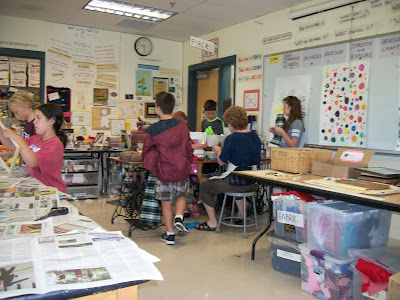"It's okay to make mistakes." How often have we heard teachers say this, or at least give lip-service to the idea. I know in our school the idea has gotten a lot of play - educators know that it is important to move away from the 'one right answer' model of teaching and learning, to allow for and even celebrate mistakes. Is the message getting through to kids?
"How did having no grades in art affect you and your work?"
One answer (by the artist who created the above oil pastel painting):
" I thought it meant that I could make mistakes in my art and not be punished for it."
If my math is right, to this learner,
GRADES = PUNISHMENT for MISTAKES
Here is another:
"It felt that I didn't have any limits."
NO GRADES = ∞
Okay, one more and then I'll stop - this one from a 5th Grader:
"It made me feel like I could be myself."
Wait! Wait! I have to add this one too (Grade 5):
" I think (having no grades) affected my work in a very good way because it makes me feel like I am good at things."
(NO GRADES = SELF EFFICACY ?)
In our art program, we have transcended grades and grading in favor of more authentic assessment and evaluation of learning and creative production.
































